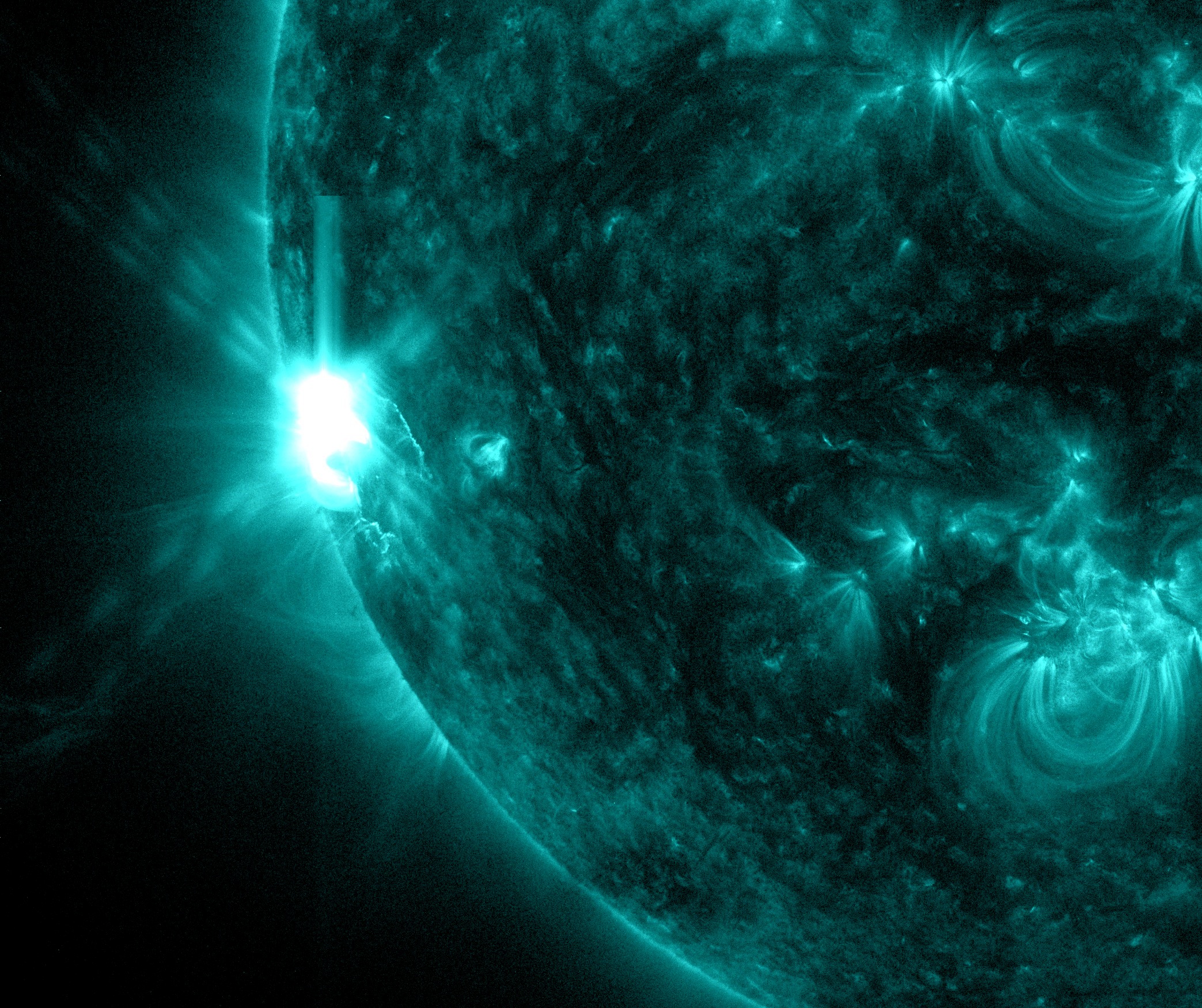Sun Emits a Solstice CME
Experimental NASA research models, based on observations from NASA's Solar Terrestrial Relations Observatory and ESA/NASA's Solar and Heliospheric Observatory show that the CME left the sun at speeds of around 1350 miles per second, which is a fast speed for CMEs.
Earth-directed CMEs can cause a space weather phenomenon called a geomagnetic storm, which occurs when they funnel energy into Earth's magnetic envelope, the magnetosphere, for an extended period of time. The CME's magnetic fields peel back the outermost layers of Earth's fields changing their very shape. Magnetic storms can degrade communication signals and cause unexpected electrical surges in power grids. They also can cause aurora. Storms are rare during solar minimum, but as the sun's activity ramps up every 11 years toward solar maximum—currently expected in late 2013—large storms occur several times per year.
In the past, geomagnetic storms caused by CMEs of this strength and direction have usually been mild.
In addition, the CME may pass by additional spacecraft: Messenger, STEREO B, Spitzer, and their mission operators have been notified. If warranted, operators can put spacecraft into safe mode to protect the instruments from the solar material.




For More Information
Credits
Scott Wiessinger (USRA): Video Editor
Scott Wiessinger (USRA): Producer
Karen Fox (ADNET Systems, Inc.): Writer
NASA's Goddard Space Flight Center
https://svs.gsfc.nasa.gov/11298
Mission:
SDO
Data Used:
SDO/AIA/304 Filter also referred to as: AIA 304
JOINT SCIENCE OPERATIONS CENTERSDO/AIA/171 Filter also referred to as: AIA 171
JOINT SCIENCE OPERATIONS CENTERSDO/AIA/131 Filter also referred to as: AIA 131
JOINT SCIENCE OPERATIONS CENTERThis item is part of this series:
Heliophysics Breaking News
Goddard TV Tape:
G2013-021 -- 2013 Heliophysics Breaking News
Keywords:
SVS >> HDTV
GCMD >> Earth Science >> Sun-earth Interactions >> Solar Activity >> Solar Flares
GCMD >> Earth Science >> Sun-earth Interactions >> Solar Activity >> Solar Ultraviolet
SVS >> SDO
SVS >> Solar Dynamics Observatory
SVS >> Heliophysics
SVS >> Corona
NASA Science >> Sun
GCMD >> Earth Science >> Sun-earth Interactions >> Solar Activity >> Coronal Mass Ejections
SVS >> Extreme Ultraviolet Imaging
SVS >> EUV Imaging
GCMD keywords can be found on the Internet with the following citation: Olsen, L.M., G. Major, K. Shein, J. Scialdone, S. Ritz, T. Stevens, M. Morahan, A. Aleman, R. Vogel, S. Leicester, H. Weir, M. Meaux, S. Grebas, C.Solomon, M. Holland, T. Northcutt, R. A. Restrepo, R. Bilodeau, 2013. NASA/Global Change Master Directory (GCMD) Earth Science Keywords. Version 8.0.0.0.0











